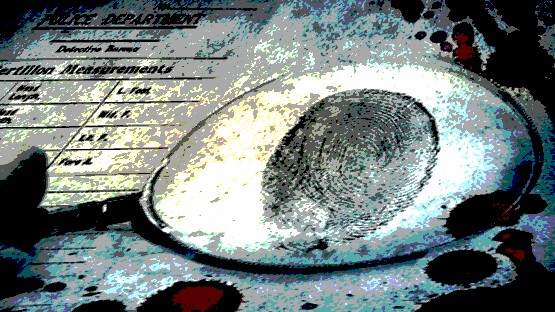The Top Story by Chris Graham
It’s almost an Olympiad away – but from the perspective of the people responsible for reducing point-source pollution into the Chesapeake Bay, 2010 is just around the corner.
“We knew that the 2010 deadline, even when it was agreed to in 2000, was going to be a big challenge,” said Alan Pollock, the manager of the Virginia Department of Environmental Quality’s water-control program, referring to the date by which the Old Dominion and other Bay states have agreed to reduce nutrient pollution into the East Coast waterway.
Wastewater-plant operators throughout the Mid-Atlantic are under the gun to meet that deadline – and it appears that at least some of the local public-works projects in the hopper in Virginia related to the Bay cleanup might extend past 2010, Pollock said last week.
“By 2010, we’ll have many of the local treatment plants operating under the new requirements, but there will also be some that will still be under construction – so it may take a couple of years after that deadline to get them all operating,” Pollock told The Augusta Free Press.
A big part of the reason for this is that the effort to reduce nutrient emissions from wastewater plants in the Chesapeake Bay watershed – which in Virginia stretches from the coastline to Northern and Central Virginia to the Shenandoah Valley – is not of the sort that can be done on the cheap.
The Augusta County Service Authority, for one, is facing $70 million in upgrades to four of its treatment plants.
“A big issue for us is that we just can’t simply afford to do all of this by ourselves,” said Ken Fanfoni, the ACSA’s executive director.
“The fact that we have such a small customer base continues to be our biggest weakness here. Take a place like Richmond, where they’ve got one treatment plant, and 100,000 customers – and here we’re trying to do four treatment plants with 7,000 customers. The cost impact per customer is significantly higher for small facilities,” Fanfoni said.
“We have to be careful that our rates don’t get to the point where they’re unaffordable,” Fanfoni told the AFP.
The treatment-plant-upgrade price tag in neighboring Rockingham County, meanwhile, is in the range of $50 million, said Curtis Poe, the executive director of the Harrisonburg-Rockingham Regional Sewer Authority. And in Waynesboro, the work is going to come in at an estimated $22 million, said Dave Randall, the manager of a comprehensive project to improve wastewater and stormwater management in the River City.
Adding to the bottom-line costs, officials in all three localities say, is the expectation that the construction market is going to be tight in the coming years with work slated on 125 treatment plants in Virginia and another 60 or more in nearby Maryland.
“The cost of fuel is driving this. The cost of steel is driving this. Even Katrina is still having a big effect on this – because there are so many construction firms in Virginia and Maryland helping them rebuild. And there’s the factor of having so many localities in Virginia and Maryland going through the construction phase to be able to treat for nitrogen and phosphorous. There’s going to be a lot of competition in terms of contractors that will be willing to come and build a plant. You have to look at those things, too,” Randall told the AFP.
“There are 125 plants in Virginia that are under these new rules. Add in Maryland, and you’re talking about close to 200 wastewater plants that have to meet these new rules by 2010. And most of these projects take two years to build. There just aren’t that many contractors. There just aren’t that many laborers to build these facilities. I’ve heard of cases already in Virginia and Maryland where projects have gone to bid and gotten no bids. That’s a pretty scary situation,” Fanfoni said.
“I think what’s going to happen, as we get closer to 2010, the DEQ is going to have to face that reality – that people are trying to do it, but they just physically can’t,” Fanfoni said.
State leaders have taken notice of this and other issues related to the expenses that will be incurred by localities and local authorities. Last year, the Virginia General Assembly and then-governor Mark Warner came to terms on landmark legislation creating a credit program that allows for the transfer of nutrient-reduction credits from plants that are in compliance with the Bay-cleanup regulations to plants that are not in compliance.
This month, legislators and Gov. Tim Kaine are expected to finalize a biennial budget that includes $200 million from the state to go toward the projected $1.4 billion in local compliance costs.
“We’ve got more work to do there. In order to meet our targets for 2010, it’s going to run us about $100 million a year,” said Emmett Hanger, a Mount Solon Republican who represents the 24th Senate District in Richmond.
“We’ve got a start on this, but we need to come up with a dedicated funding source to ensure that we’ll be able to do this for the long term,” Hanger told The Augusta Free Press.
Ann Jennings, the Virginia executive director of the Chesapeake Bay Foundation, said the state has made “significant progress” in this regard to date.
“The state has made progress by putting the nutrient-trading regulations in place, and now, hopefully, if that money stays in the budget, that will be historic as far as an infusion of funds to assist local governments,” Jennings told the AFP.
The money is a proverbial drop in the bucket, though, when one considers the expanse of projects that are in the planning stages or are already under way.
“There is more than $600 million that’s been requested by localities across the state. So you can see that even with that $200 million in assistance, it’s going to fall far short of what’s going to be necessary for everybody that’s working on meeting these state regulations and is trying to do their part to clean up the Bay,” Poe told the AFP.
Even with all the challenges, the clock is ticking – and a deadline is a deadline.
“That deadline is important – because Virginia signed onto the dotted line,” Jennings said.
“In the year 2000, Virginia signed the Chesapeake 2000 agreement and said that we would clean the Bay up by 2010. Certainly, that date becomes important – and it’s important from the perspective of, is Virginia going to live up to the commitment that it made?” Jennings said.
(Originally published 03-20-06)










